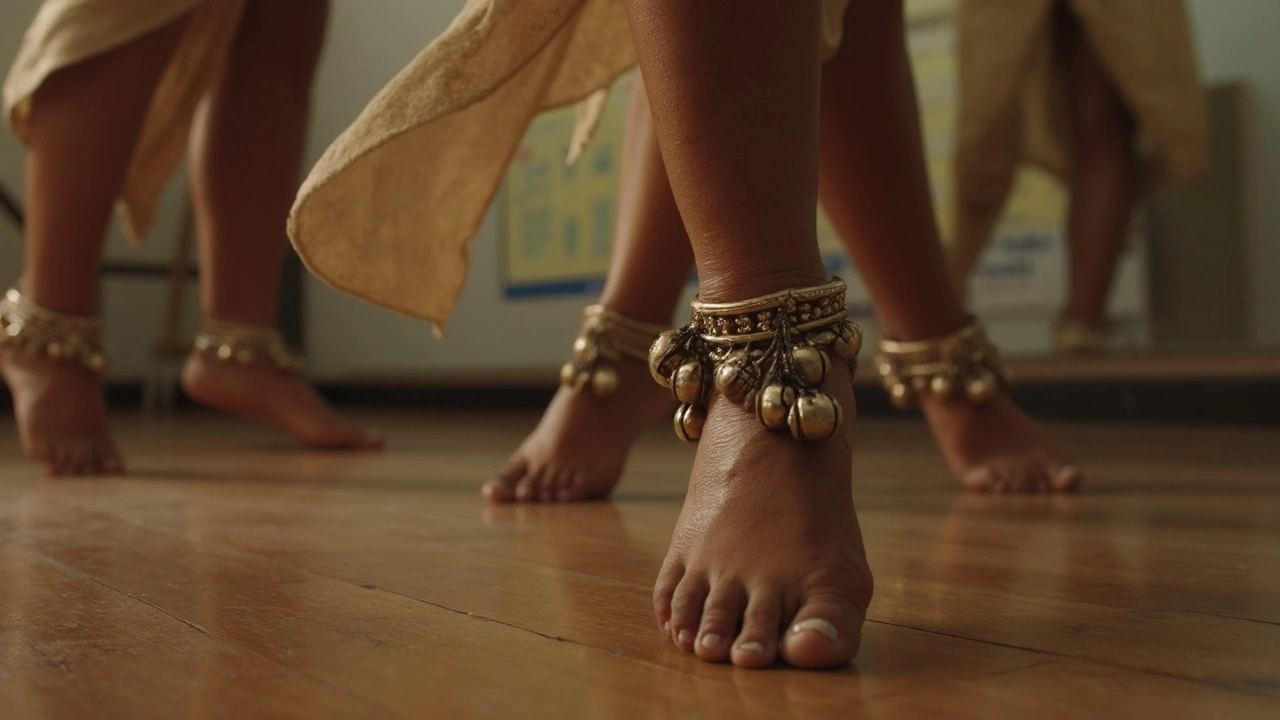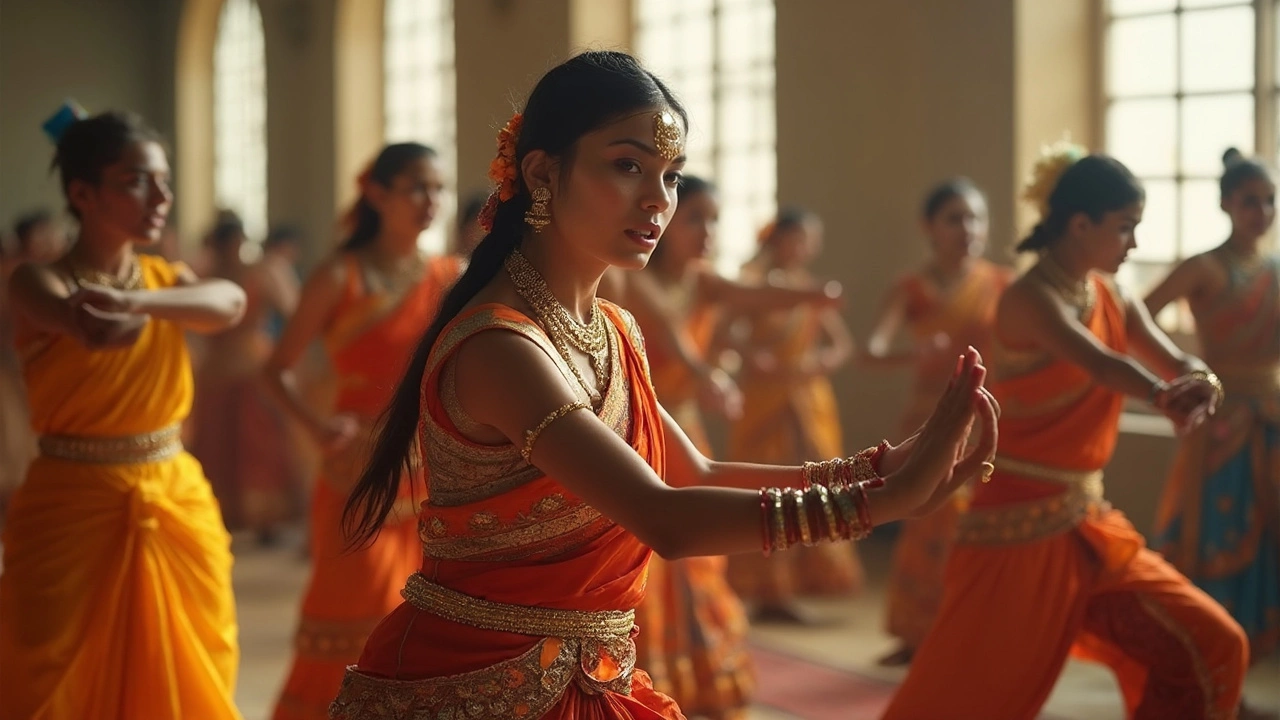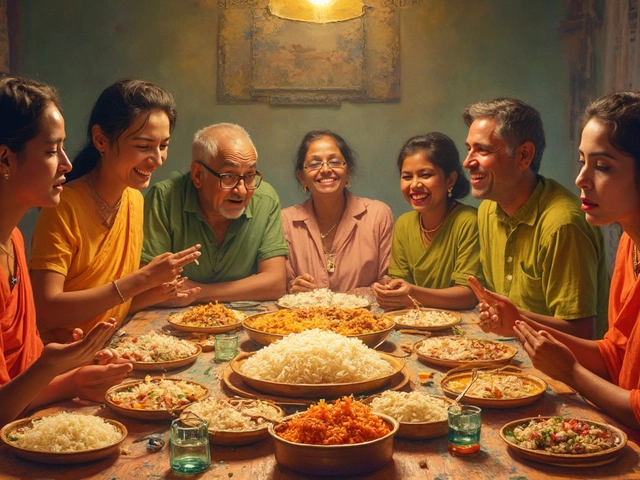Some dances feel like they were designed to make you sweat bullets. But what actually makes a dance style the 'hardest'? It's not just about fancy footwork—sometimes it's a mix of speed, rhythm, full-body control, and even gravity-defying jumps. Certain regional dances require years to nail the basics, and even pros mess up now and then.
There’s a lot more to this than just the bragging rights. Hard dances often have deep roots in culture, and the challenge is part of the point. Ever seen dancers hopping between bamboo poles in Tinikling, or those quick-tapping Irish step dancers? If you've wondered how tough those can get, you’re about to find out. Whether you're a beginner or already obsessed with dance videos, knowing what goes into these styles helps you spot what sets them apart—and decide if you're game to give them a shot.
- What Makes a Dance Style 'Hardest'?
- A World Tour of Demanding Regional Dances
- Filipino Tinikling to Irish Step: Comparing the Toughest Moves
- Training, Tips, and Common Mistakes
- Should You Try the Hardest Dance Style?
What Makes a Dance Style 'Hardest'?
So, what turns a regular dance into one that even seasoned dancers call brutal? Several things come into play—some obvious, some less so. First, there’s downright physical demand. For example, ballet, especially Russian or French school, asks for insane leg strength, flexibility, and super precise balance. It's not just about looking cool in tights—those folks work out like athletes. Now, shift gears and look at something like Kathakali from India. The dancers stay low, hold tough poses, and use detailed face work you barely notice, but it takes ages to train for.
Technique complexity is a huge factor, too. Take hardest dance style contenders like Irish step or flamenco. Irish step involves insanely fast footwork, all while the upper body barely moves—even tiny mistakes stick out. Flamenco is a different animal: it’s rhythm-heavy, blending tricky foot tapping, arm movements, and even clapping patterns—all at once. If your sense of timing is off, there’s nowhere to hide.
Endurance can make or break you here. Some dances are marathons, with several-minute routines demanding the same energy from start to finish. In styles like Capoeira, you’re flipping, dodging, and doing acrobatics for stretches at a time. One missed cue? It can mean a bruise—or worse.
Let’s not forget the mental side. Learning certain regional dances means decoding a long list of steps, traditional gestures, or rules. For example, Polynesian hula isn’t just hip swaying—it’s memorizing stories, hand signals, and exact pattern changes for each song. Mess up a symbol, and you change the whole meaning.
If you’re weighing which style deserves the "hardest" title, you’ve got to consider all this: the raw physical effort, tough technique, cultural layers, and the stamina marathon it takes just to get comfortable. So when people ask which regional dance style breaks the toughest sweat, it’s never an easy answer—it really depends on what kind of challenge you’re looking for.
A World Tour of Demanding Regional Dances
Getting into the world of tough regional dances? It's basically a test of will, muscle, and memory. Every culture seems to have that one dance style people call legendary for its difficulty. Let's look at a few of the most notorious from around the globe.
- Irish Step Dance: If you’ve seen "Riverdance," you know this one. Dancers keep arms stiff by their sides, but their feet move at lightning speed. The world record for hardest shoe taps in a minute stands at 1,628—by Michael Flatley himself.
- Tinikling (Philippines): Picture trying to jump in and out of two bamboo poles that get faster and faster. Toe injuries are common for beginners. At most school performances, the top students have been practicing since they could walk.
- Russian Hopak: This Ukraine-rooted dance demands crazy leg kicks, squats, and jumping splits. It’s almost a sport; Ukrainian army recruits practice it for cardio and leg strength.
- Kathakali (India): Heavy makeup, massive costumes, and wild facial expressions are just the start. Top performers stay in stances that burn around 400-600 calories per hour, and training often runs for 8-10 years before you're considered stage-ready.
- Flamenco (Spain): Forget just clapping and fancy costumes. The toe and heel stamps, high-speed turns, and layered footwork can wreck your calves and demand freakish stamina. Some pros go through three pairs of shoes a month!
Curious how these unforgiving styles stack up for difficulty and unique quirks? Here's a quick cheat sheet:
| Dance Style | Main Challenge | Avg. Training Years | Fun Fact |
|---|---|---|---|
| Irish Step | Rapid footwork, strict posture | 6-10 | World record: 1,628 taps/min |
| Tinikling | Timing, agility, foot precision | 5-8 | Originated to mimic birds |
| Hopak | Jumps, squats, flexibility | 5-12 | Used for army training |
| Kathakali | Heavy costumes, balance, eyes/faces | 8-10 | Costume can weigh 40+ lbs |
| Flamenco | Footwork, rhythm, endurance | 7-12 | Up to 180 bpm stamping |
Trying out any of these is asking a lot from your body and your brain. The real secret? Every performer started out fumbling and second-guessing just like anyone else. If you’re itching to take on the hardest dance style, this line-up gives you plenty of options—and probably a few surprises.

Filipino Tinikling to Irish Step: Comparing the Toughest Moves
If you line up regional dances for difficulty, Tinikling from the Philippines and Irish Step Dances always end up near the top. Both styles look impossible to beginners—and for good reason. Each one has its own special pain points and “are-you-kidding-me?” moves.
Hardest dance style is a serious claim, but consider Tinikling first. In Tinikling, dancers jump and weave between bamboo poles that clack together in rhythm. The poles snap shut fast. Mess up your timing, and you’ll get a painful reality check on your ankles. You also need to stay light on your feet and always focus, since tired legs mean more mistakes. Traditionally, two people work the poles while others dance between them, and speeds can almost double in advanced rounds.
- The average speed for a tricky Tinikling session is about 100–120 BPM (beats per minute), which feels really fast once the poles start moving.
- Most dancers practice timing drills for weeks before even stepping between the poles.
- Tinikling is often taught in schools across the Philippines, and those who turn pro usually train for years.
Now, Irish Step Dance. Picture the Riverdance crew: legs blur, feet sound like machine-gun fire, and upper bodies barely move. What sets Irish Step apart is the mix of rigid posture and ultra-quick footwork. No arm movement, but everything below the waist gets a workout—up to 12 jumps a minute in championship routines. There’s also tough footwear. Beginner dancers use soft shoes, but advanced ones use heavy hard shoes, basically tap shoes with attitude.
- Championship Irish Step performances can clock over 120 taps per minute.
- Stamina is a must—top routines can last 2–4 minutes of non-stop hopping and pounding.
- Sprained ankles and shinsplints are common among pros, especially when practicing for long hours.
If you like comparing numbers (and it helps for bragging rights), check this out:
| Dance | Typical Tempo (BPM/taps per min) | Main Challenge | Common Injuries |
|---|---|---|---|
| Tinikling | 100–120 BPM | Precise timing, agility | Bruised ankles, shin injuries |
| Irish Step | 120+ Taps/min | Stamina, foot speed | Shinsplints, sprains |
So which one is tougher? It depends on your strengths. If you’re good at timing, maybe Irish Step’s explosive jumps get you sooner than Tinikling’s near-misses. But if you panic under pressure, those snapping bamboo poles will keep you on edge every second. Either way, both styles are in a class of their own for physical and mental challenge.
Training, Tips, and Common Mistakes
If you’re planning to tackle what many call the hardest dance style, get ready for sweat, frustration, and that awesome feeling when you finally nail a move. Training for tough regional dance forms usually takes serious commitment. Ballet dancers spend hours daily at the barre to build muscle memory. Irish step dancers? Their calves are basically steel from constant jumping and rigid movements. Folk dancers in Georgia start training young, learning spins and jumps that would leave most people flat on their backs.
What’s the best way to train? Focus on drilling the basics. No style is forgiving if you skip foundation steps—bad habits stick hard and make advanced moves way harder later on. For anyone taking on something like Tinikling, always start slow with the bamboo poles until your timing feels natural. For Kathak, regular footwork drills are crucial since the style depends so much on clear, lightning-fast foot taps.
- Film yourself practicing. Watching your own dancing makes it easier to spot weird posture or missed beats.
- Stretch every time. Many tough dance styles demand flexibility—forgetting this makes injuries way more likely.
- Ask for feedback. Even advanced dancers benefit from honest tips from others, especially in styles where tradition matters.
- Get used to repetition. Repeat moves way more than you think necessary. That’s where real progress happens.
Beginners (and honestly, everyone) run into a few universal mistakes. Rushing the basics is a big one—skipping to cool tricks before perfecting posture and steps leads to clumsy dancing down the road. Another common trap is ignoring what your body is telling you. Forcing a jump, ignoring pain, or pushing through fatigue can lead to nasty injuries, especially in styles loaded with jumps or stomping, like flamenco or Ukrainian Hopak.
If you keep at it, welcome the mistakes and stay consistent, you might just surprise yourself. Mastering a brutal dance style isn’t about instant results—it’s more about toughing it out, correcting tight hamstrings, and drilling until your feet finally listen.

Should You Try the Hardest Dance Style?
Jumping into the hardest dance style might sound wild, but it can actually change the way you think about movement, discipline, and your own limits. Dancers who push themselves with tough regional styles—like Indian Kathak’s lightning spins or Russian Hopak’s killer squat jumps—say the rewards go way beyond perfecting fancy steps. You build insane strength, crazy stamina, and a real respect for the history packed into every move.
Not gonna lie: your legs, lungs, and patience will get tested. It’s normal to mess up. Even pros have embarrassing moments. Tiler Peck, principal dancer with the New York City Ballet, said,
“You never just get to the end of your technique. There’s always more to learn, more to control, and more ways to fail and try again.”
So, should you give it a shot? If you’re up for a challenge, regional dance forms can be a blast—even humbling. Here’s what makes the jump easier:
- Start with a beginner class—don’t just copy YouTube. Proper teachers keep you safe from weird injuries and bad habits.
- Learn some dance history. Understanding the culture actually helps you unlock moves that make zero sense otherwise.
- Record your practice sessions. It’s painful to watch yourself at first, but you’ll spot what needs work.
- Expect slow progress. Some styles, like Irish dance, need months just to stop looking awkward. Stick with it.
Whether your goal is to compete, connect with your culture, or just crush it on TikTok, tackling a tough style will stretch your mind and body. And if you’re worried about looking silly at first—good news: it’s a rite of passage for every dancer who’s gotten even halfway decent.





